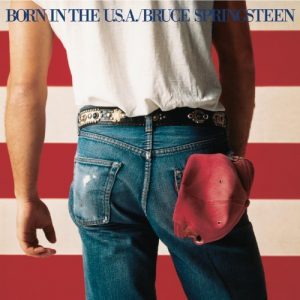Vonda N. McIntyre’s “The Crystal Star” (1994) often appears on lists of the worst “Star Wars” novels, so I went into this re-read with low expectations and a sense of dread. Thus, I was pleasantly surprised to find that the novel is well-written and logically plotted with accurate characterizations and good concepts. It’s by no means a great novel, but “The New Rebellion,” “Darksaber” and “The Jedi Academy Trilogy” are worse, to name a few.
It is a weird novel, though. I suspect McIntyre works more in the realm of fantasy, because “The Crystal Star” includes “Harry Potter”-esque concepts like a centaur girl named Lusa, a feline-esque boy named Tigris, a dragon and a wyrwulf (who, in a reverse of the norm, transforms from wolf to boy at book’s end). And Jaina rubs molecules together to create balls of light – might as well be a “lumos” spell. Although Lusa would later appear in the “Young Jedi Knights” series, the other characters and concepts generally went unreferenced in later Expanded Universe works, no doubt because they didn’t feel “Star Wars-y.”
The villain of the piece, the Force-sucking blob Waru, gets a lot of criticism. And it’s warranted – the climactic scene of Leia and Han swimming through the golden ichor of Waru to rescue the brain-addled Luke is the most ridiculous sequence in the book. Meanwhile, the human villain, Hethrir – dark-sider and leader of the Empire Reborn – seems like he belongs in the pages of “Young Jedi Knights.”
Indeed, fans of Jaina, Jacen and Anakin will want to start with “The Crystal Star.” The twins are 5 in this book, and Anakin is 3, but the twins’ basic traits are introduced here, particularly Jacen’s affinity for all living creatures. When Jacen tames a dragon and all the kids ride on it to escape Hethrir’s minions in the woods, it’s like something from an “Ewoks” episode, except these kids aren’t Ewoks. McIntyre is quite good at writing from the perspectives of young kids and the way they show enthusiasm and fear. On the other hand, she goes a bit too far with the happy reunions – I think Leia happily hugs her kids about 30 times over the course of the novel.
Still, this isn’t a mislabeled young adult novel, as is the case with “The New Rebellion” and Kevin J. Anderson’s adult entries. I appreciate “The Crystal Star’s” lack of a galaxy-shaking nemesis. Despite the serious threat to the Solo kids, this seem like a smaller, more intimate adventure. Indeed, Han sees his and Luke’s journey to Crseih Station to possibly find a Jedi Academy candidate as a vacation. Eventually, Luke does meet Rillao, and it’s too bad they she wouldn’t be fleshed out more in future books. Also, I think Rillao’s and Hethrir’s troubled son Tigris could’ve worked well in the “Young Jedi Knights” books as a non-Force-using assistant, but likewise, “The Crystal Star” is his one and only appearance.

Although McIntyre’s fantasy elements were not embraced by future authors, other concepts were. A.C. Crispin gave us the backstory of the Han-Xaverri romance in the “Han Solo Trilogy.” While Waru didn’t appear again, a different threat from outside the known galaxy (the Yuuzhan Vong) would be the driving force of “The New Jedi Order” series. The idea of worldships, small Empire-created star-and-planet combos that can move throughout space (Hethrir has his Empire Reborn academy on one of them), would not be continued. However, an interstellar planet, Zonama Sekot, appeared in “Rogue Planet” and “The New Jedi Order.”
While “Crystal Star” isn’t a particularly political book, it does force Leia to grapple with the fact that slavery still exists in the post-Empire galaxy (Hethrir sells his failed students into slavery). The EU would heavily explore the slave trade, and the New Republic’s reaction to it, in the “Fate of the Jedi” series.
Unless you’re really into the Solo kids, “The Crystal Star” is not an essential Expanded Universe read. It’s mostly forgettable except for the oddity value of all the fantasy-type creatures and the inter-dimensional villain. But, despite what you’ll see on those Internet lists, it’s not a completely awful book, either.

